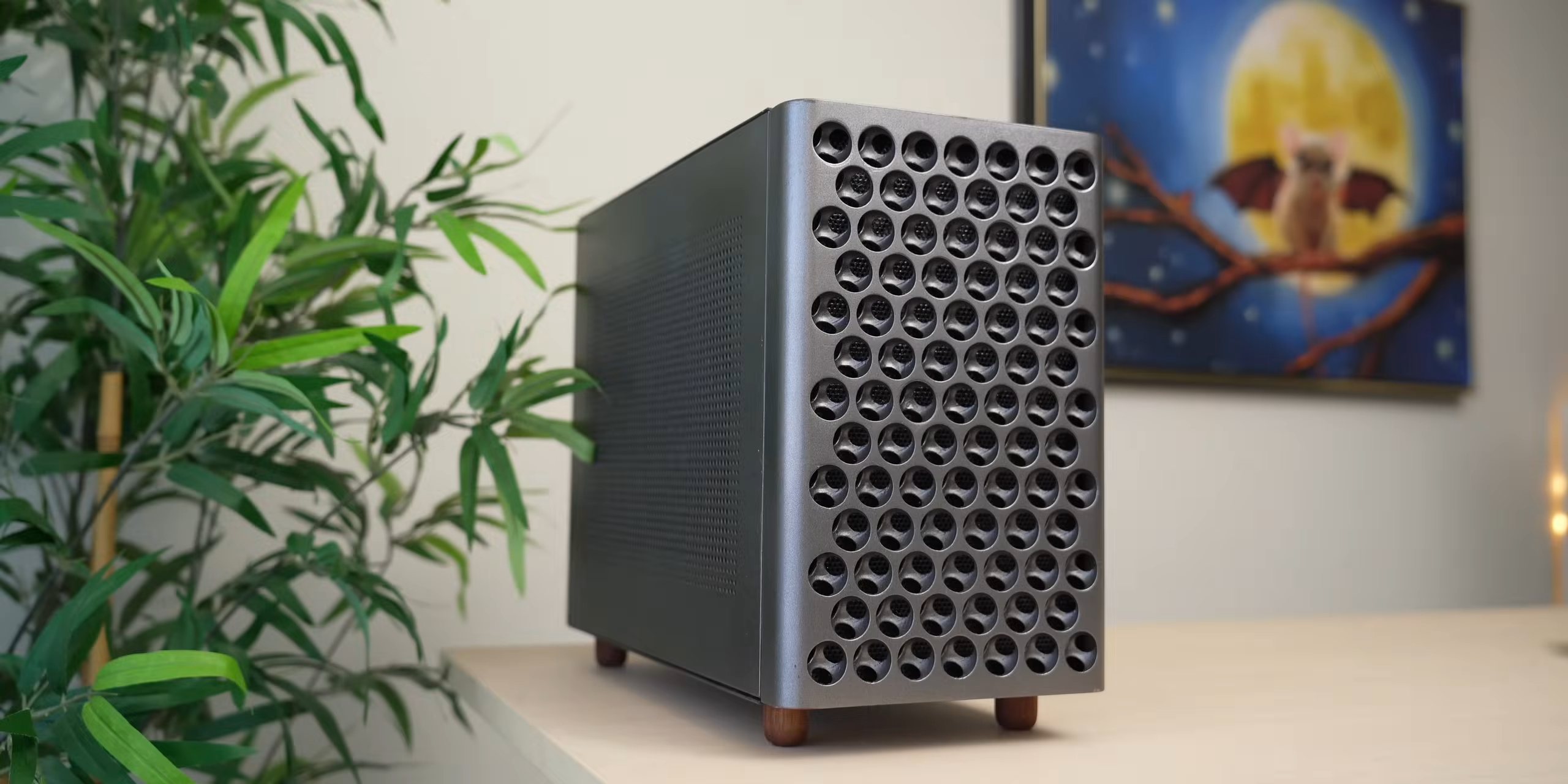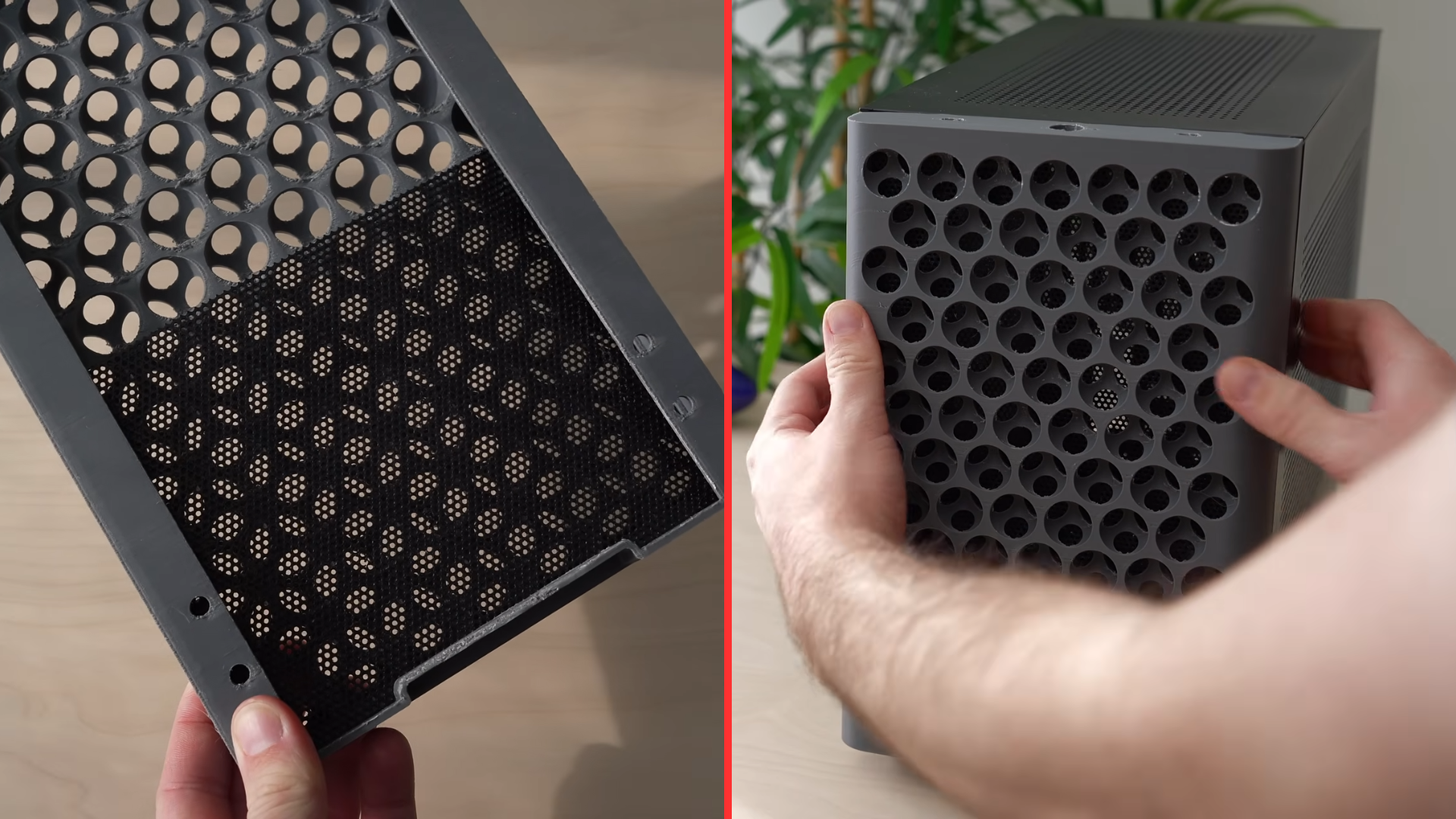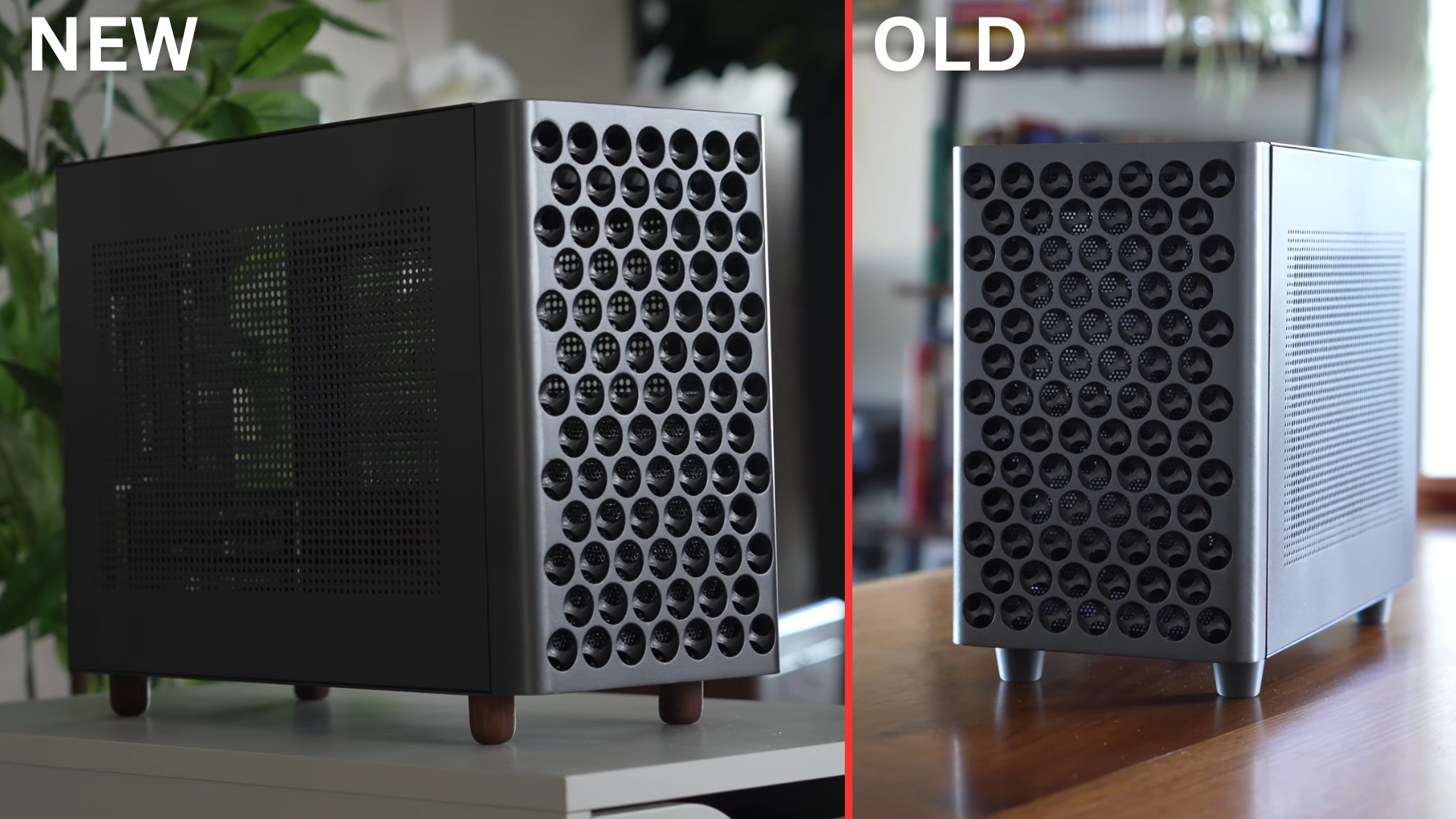
When most people think of a $600 gaming PC, they picture plastic-heavy cases, stock coolers, and enough RGB to light up a dorm room. But one builder decided that wasn’t enough; innovation was necessary, and documenting it even more so. Armed with a 3D printer, a can of graphite spray paint, and some surprisingly premium broom handles, Christian Selig on YouTube, transformed a modest build into a personalized showcase piece—one that plays Cyberpunk at 4K and looks like it belongs in a design studio, mostly because it mimics Apple's cheese-grater Mac Pro.
In the video, our host starts with a list of requirements for his perfect gaming PC: it must be cheap, it must be compact, it must have room for upgrades, and it should perform like a modern computer without compromises. That's a high bar that already eliminates many options like handhelds, mini PCs, expensive ITX cases and instead, focuses the builder to rely on some creative part-hunting. As such, Christian gathered a lot of research and landed on some great deals—like those in our Amazon Prime Day roundup—and bought everything new except for the CPU and GPU, which were acquired from Facebook Marketplace.
Component |
Part Chosen |
Price |
|---|---|---|
Processor |
AMD Ryzen 5 5600 |
$70 |
Graphics Card |
Nvidia RTX 3060 Ti |
$170 |
Motherboard |
MSI B550M Pro-VDH Wi-Fi |
$100 |
Memory |
16GB (8x2) Corsair Vengeance LPX DDR4 3600MHz |
$34 |
Storage |
WD Blue SN580 1TB |
$55 |
Power Supply |
MSI MPG A850G (850W) |
$100 |
You might've noticed an interesting omission from the list above: the case, and that's because Christian's entire build is centered around having the perfect chassis to house his components in, so he made one. Instead of going for popular mATX options like the Cooler Master NR200 or the Lian Li A3, he chose the Sama IM01. It's made from metal, has a sleek design, and only costs $60—all for a case with only 22L of volume, making it shockingly close to an actual SFF case (which are categorized under 20 liters). That being said, some things about the case, like the lack of USB-C in its front I/O and a poorly ventilated front panel, forced Christian to think of ways to improve the build. He remembered how much he admired the Mac Pro's cheese-grater design and quickly got to work.
First, he designed a new front panel in CAD software that would clip on the rest of the case to give it that Mac Pro finish. After taking some measurements and reading up on documentation online, the first 3D print came out great, and it was quickly followed by a second, final print. This new model had the exact cutouts Christian wanted for the USB-C ports, along with a custom power button lifted straight from the I/O of the actual front panel. He also added a 3D-printed fine mesh behind the panel to filter out dust. Some desoldering and resoldering later, the new front panel had a new power button along with a white power LED. However, due to the DIY nature of 3D printing, it definitely needed some polish.

After a quick trip to Home Depot, the modder returned with enough primer and paint to cover his house. The front panel was sanded to give the circular cutouts a cleaner finish, and a satin coat was applied to give the look of brushed metal, matching the design of the real Mac Pro. Christian also replaced the default case feet with fancy new wooden ones made from broomsticks he had found at Home Depot. He cut up the brooms to get smaller pieces, carved them out, polished them, and they ended up looking like tasteful walnut, offsetting the brutality of metal on his desk.

A couple of small things followed, like installing Windows and all the necessary drivers required for the GPU and motherboard—a seemingly unprecedented task for a Mac user. The first games Christian tested on his new PC were Cyberpunk 2077... at 4K. Thankfully, he used the new Transformer model of DLSS, which pushed his framerates past the 40s; that's still mighty impressive for a 3060 Ti. Stardew Valley and Black Myth: Wukong also ran just fine, but the CPU did get a little toasty at around 85 degrees. That might not be ideal for AM4, but it is to be expected when the 5600 is sitting under the stock cooler inside a compact chassis.
The entire video is masterfully edited, with a real flow to the storytelling. There's even a stop-motion sequence in there, along with tons of beautiful B-roll shots, so it's worth checking out for yourself. The final build ended up costing $642, with just the parts costing only $596. Despite the customization, Christian's gaming PC cost him less than $700, which was the exact goal he set out to achieve at the start of the video. For someone who's used to console gaming, the PS5 Pro was his benchmark and even if his PC doesn't offer 1:1 performance to that, it's still a great machine deserving of the "custom gaming PC" moniker.
Follow Tom's Hardware on Google News to get our up-to-date news, analysis, and reviews in your feeds. Make sure to click the Follow button.







